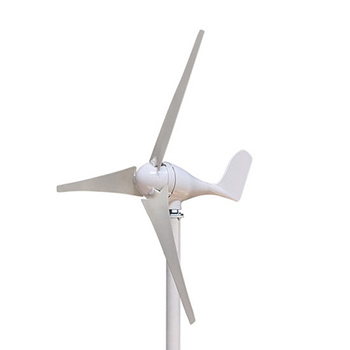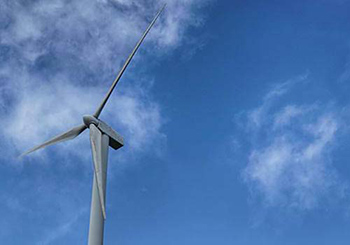Each item has a different lifespan. How long the service life of wind turbines is, this is also a question that many people want to know. Generally speaking, the service life of wind turbines is more than 20 years. But if we can maintain the wind turbine, its service life can be extended.
With the gradual aging of the in-service wind turbines, coupled with extreme weather, unpredictable load fluctuations and other factors, the wind turbine pitch bearing may fail unexpectedly, resulting in a reduction in the life of the wind turbine. Through the design upgrade of the pitch bearing, the life of the pitch bearing can be extended by up to 10 years. While extending the service life of the wind turbine, it can improve the operating efficiency of the wind turbine and reduce the downtime.
Pitch bearings are designed to last 20 years (approximately 175,000 hours) and typically consist of gothic arched raceways with deep grooves and the largest balls. The balls are evenly distributed by disc-shaped spacers or cage dividers. Single-row four-point or double-row eight-point contact designs provide excellent load capacity, and bearing races allow the balls to simultaneously carry loads from any direction.
However, the characteristics of the fan under some operating conditions may lead to a decrease in the service life of the pitch bearing. Ideally, a pitch bearing would never rotate more than 90° over its entire life. However, in reality a pitch bearing will suffer very little under heavy loads.
The geographical location of the wind turbine is remote and the environment is complex, and the position of the pitch bearing is at the top of the wind turbine tower. Routine inspections and observations do not reveal the problem. Only during regular maintenance every 6 to 12 months, the pitch bearing can be directly observed and the problem can be found.
There are reasons for the failure of the pitch bearing. Now, let’s move to its reasons.
One of the reasons for the failure of the pitch bearing: lubrication.
The classical failure modes (i.e. fatigue spalling and Brinell spalling) predicted by standard bearing calculation models are not actually common causes of pitch bearing failures. Common failures are usually caused by poor lubrication.
Lubrication-induced failures include vibratory wear (false Brinell wear), corrosion, debris settling, and surface-induced fatigue. Damaged separators, peeling raceways, split balls, and bearing locking can all be signs of poor pitch bearing lubrication. Many failures classified as load-based may actually be due to problems caused by grease degradation.
As wind turbines are subjected to harsh weather conditions, proper lubrication methods must be designed to ensure maximum machine uptime and minimum maintenance.
Proper selection of grease is the first and most important step. Pitch bearing grease must be resistant to water washout and contain a durable additive package that protects against high loads and vibrations.
Using a continuous feed lubrication system also enables the field to add or adjust grease fill as needed without a technician climbing.
Another reason for the failure of the pitch bearing: overload operation.
Although lubrication is the main reason, overload operation failures are also an area that we need to pay attention to. Overloading usually occurs due to the bearing lacking the rigid support of the hub assembly. It results in an imbalance where a portion of the raceway carries the majority of the load.
Load and operation-induced failures include broken components (rolling ball elements, ball separators, races), separator lock-up and crushed raceway cores. As mentioned above, lubrication conditions can also exacerbate these failures.
In pitch bearings, the contact area between the balls and the raceway forms an ellipse centered on the raceway contact angle. Under large thrust or overturning loads, the contact ellipse overflows the physical limit (truncation) of the raceway.
The probability of contact cut-off increases with the ratio of bearing diameter to thickness, or with a decrease in external support. Severe contact truncation can create stress rises that can cause path edges to snap or balls to break into pieces.
Finally, a bearing in a clean room with new seals, fresh grease, and mounting it on a solid, perfectly flat surface can last for decades.
All in all, if you hope the wind turbines work well and as long as possible, you need to pay attention to its maintenance.
